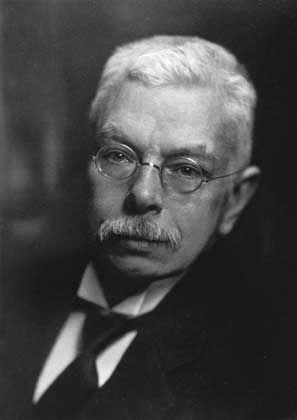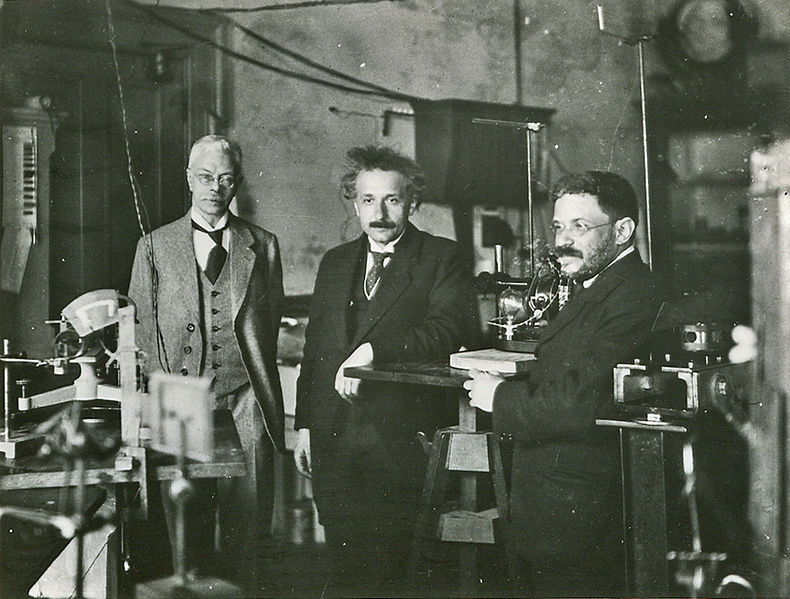<Back to Index>
- Physicist Pieter Zeeman, 1865
- Poet Kazi Nazrul Islam, 1899
- 1st Prime Minister of Burma U Nu, 1907
PAGE SPONSOR


Pieter Zeeman (25 May 1865 – 9 October 1943) was a Dutch physicist who shared the 1902 Nobel Prize in Physics with Hendrik Lorentz for his discovery of the Zeeman effect.
Pieter Zeeman was born in Zonnemaire, a small town on the island of Schouwen-Duiveland, Netherlands, to Catharinus Forandinus Zeeman, a minister of the Dutch Reformed Church, and Willemina Worst. He was early on already interested in physics. In 1883, the Aurora borealis happened to be visible in the Netherlands. Zeeman, then a student of the high school in Zierikzee, made a drawing and description of the phenomenon and submitted that to Nature, where it was published. The editor praised "the careful observations of Professor Zeeman from his observatory in Zonnemaire", which should have been pleasing to the high school student.
After finishing high school in 1883 he went to Delft for supplementary education in classical languages, then a requirement for admission to University. He stayed at the home of Dr. J.W. Lely, co-principal of the gymnasium and brother of Cornelis Lely, who was responsible for the concept and realization of the Zuiderzee Works. While in Delft, he first met Heike Kamerlingh Onnes, who was to become his thesis advisor.
After Zeeman passed the qualification exams in 1885, he studied physics at the University of Leiden under Kamerlingh Onnes and Hendrik Lorentz. In 1890, already before finishing his thesis, he became Lorentz'
assistant. This allowed him to participate in a research program on the Kerr effect.
In 1893, he submitted his doctor's thesis that was devoted to the Kerr
effect, on the reflection of polarized light on a magnetized surface.
After obtaining his doctorate, he went for half a year to F. Kohlrausch' institute in Strasbourg. In 1895, after returning from Strasbourg, Zeeman became Privatdozent in mathematics and physics in Leiden. The same year he married Johanna Elisabeth Lebret (1873 – 1962); they had three daughters and one son.
Due to J.T. Schmelz in 1896, three years after submitting his thesis on the Kerr effect, he disobeyed the direct orders of his supervisor and used laboratory equipment to measure the splitting of spectral lines by a strong magnetic field. He was fired for his efforts, but revenge later on was going to be sweet: he won the 1902 Nobel Prize in Physics for the discovery of the Zeeman effect. As an extension of his thesis research, he began investigating the effect of magnetic fields on a lightsource. He discovered that a spectral line is split into several components in the presence of a magnetic field. Lorentz first heard about Zeeman's observations on Saturday, October 31, 1896 at the meeting of the Royal Netherlands Academy of Arts and Sciences in Amsterdam, where these results were communicated by Kamerlingh Onnes. The next Monday, Lorentz called Zeeman in his office and presented him with an explanation of his observations, based on Lorentz' theory of electromagnetic radiation.
The importance of Zeeman's discovery became soon apparent. It confirmed Lorentz' prediction about the polarization of light emitted in the presence of a magnetic field. Because of Zeeman's work, it appeared that the oscillating particles that according to Lorentz were the source of light emission were negatively charged, and were a thousandfold lighter than the hydrogen atom. This conclusion was reached well before Thomson's discovery of the electron. The Zeeman effect thus became an important tool for elucidating the structure of the atom.
Because of his discovery, Zeeman was offered a position as lecturer in Amsterdam in 1897, and in 1900 followed his promotion to professor of physics at the University of Amsterdam. In 1902, he received the Nobel Prize for Physics for the discovery of the Zeeman effect, together with his former mentor Lorentz. Five years later, in 1908, he succeeded Van der Waals as full professor and Director of the Physics Institute in Amsterdam.
In 1923, a new laboratory was built in Amsterdam, which in 1940 was renamed Zeeman Laboratory. This new facility allowed him to pursue refined investigation of the Zeeman effect. For the remainder of his career, he remained interested in research in Magneto-Optics. He also investigated the propagation of light in moving media. This subject became the focus of a renewed interest because of special relativity, and enjoyed keen interest from Lorentz and Einstein. Later in his career he became interested in Mass spectrometry.
In 1898, Zeeman was elected member of the Royal Netherlands Academy of Arts and Sciences in Amsterdam, and he served as its secretary from 1912 to 1920. He won the Henry Draper Medal in 1921, and several other awards and Honorary degrees. He became Emeritus professor in 1935.
Zeeman died on October 9, 1943 in Amsterdam, and was interred in Haarlem.